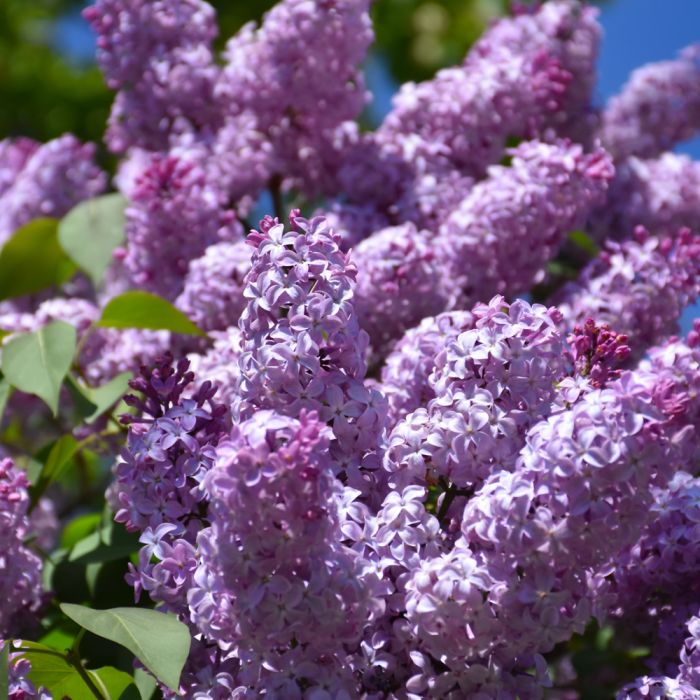Top Ten Shrubs
Tim's Top Ten Shrub Recommendations!




An old-fashioned homestead favorite, perfuming the air with fragrance in early spring from upright panicles of lilac flowers; upright, bushy habit, quite leggy, suckers profusely, makes a great tall and dense hedge.
Elevate your landscaping with Gertens' unmatched variety of shrubs! Selecting the right shrubs for your backyard can enhance its beauty and functionality. Consider factors like sunlight, soil type, and mature size when choosing shrubs. For sunny areas, flowering shrubs like roses or hydrangeas can add color and charm. In shady spots, opt for shrubs like azaleas or hostas. Evergreen shrubs provide year-round interest and privacy, while deciduous shrubs offer seasonal color changes. At Gertens, we offer a wide selection of shrubs to suit every backyard need.
Height: 15 feet
Spread: 12 feet
Sunlight:![]()
Hardiness Zone: 2a
Other Names: Common Lilac
Description:
An old-fashioned homestead favorite, perfuming the air with fragrance in early spring from upright panicles of lilac flowers; upright, bushy habit, quite leggy, suckers profusely, makes a great tall and dense hedge
Ornamental Features
Common Lilac features showy panicles of fragrant lilac purple flowers rising above the foliage in mid spring. The flowers are excellent for cutting. It has bluish-green foliage throughout the season. The heart-shaped leaves do not develop any appreciable fall color. The fruit is not ornamentally significant.
Landscape Attributes
Common Lilac is a multi-stemmed deciduous shrub with an upright spreading habit of growth. Its relatively coarse texture can be used to stand it apart from other landscape plants with finer foliage.
This is a high maintenance shrub that will require regular care and upkeep, and should only be pruned after flowering to avoid removing any of the current season's flowers. It is a good choice for attracting butterflies to your yard, but is not particularly attractive to deer who tend to leave it alone in favor of tastier treats. Gardeners should be aware of the following characteristic(s) that may warrant special consideration;
Common Lilac is recommended for the following landscape applications;
Planting & Growing
Common Lilac will grow to be about 15 feet tall at maturity, with a spread of 12 feet. It tends to be a little leggy, with a typical clearance of 3 feet from the ground, and is suitable for planting under power lines. It grows at a medium rate, and under ideal conditions can be expected to live for approximately 30 years.
This shrub should only be grown in full sunlight. It is very adaptable to both dry and moist locations, and should do just fine under average home landscape conditions. It is not particular as to soil type or pH. It is highly tolerant of urban pollution and will even thrive in inner city environments. This species is not originally from North America.
| SKU | Container Size |
| S2990 | #2 Container (2 Gallon) |
| S3000 | #5 Container (5 Gallon) |
| S3010 | #7 Container (7 Gallon) |
* Not all container sizes may be available at this time. See store for details on specific container size availability.
| Gerten Grown Plants | Gerten Grown Plants |
|---|---|
| Sun Preference | Full-Sun |
| Mature Height (Range) | 10 - 15 feet |
| USDA Hardiness Zone | 2, 3, 4, 5, 6, 7 |
| Common Family Name | Lilac |